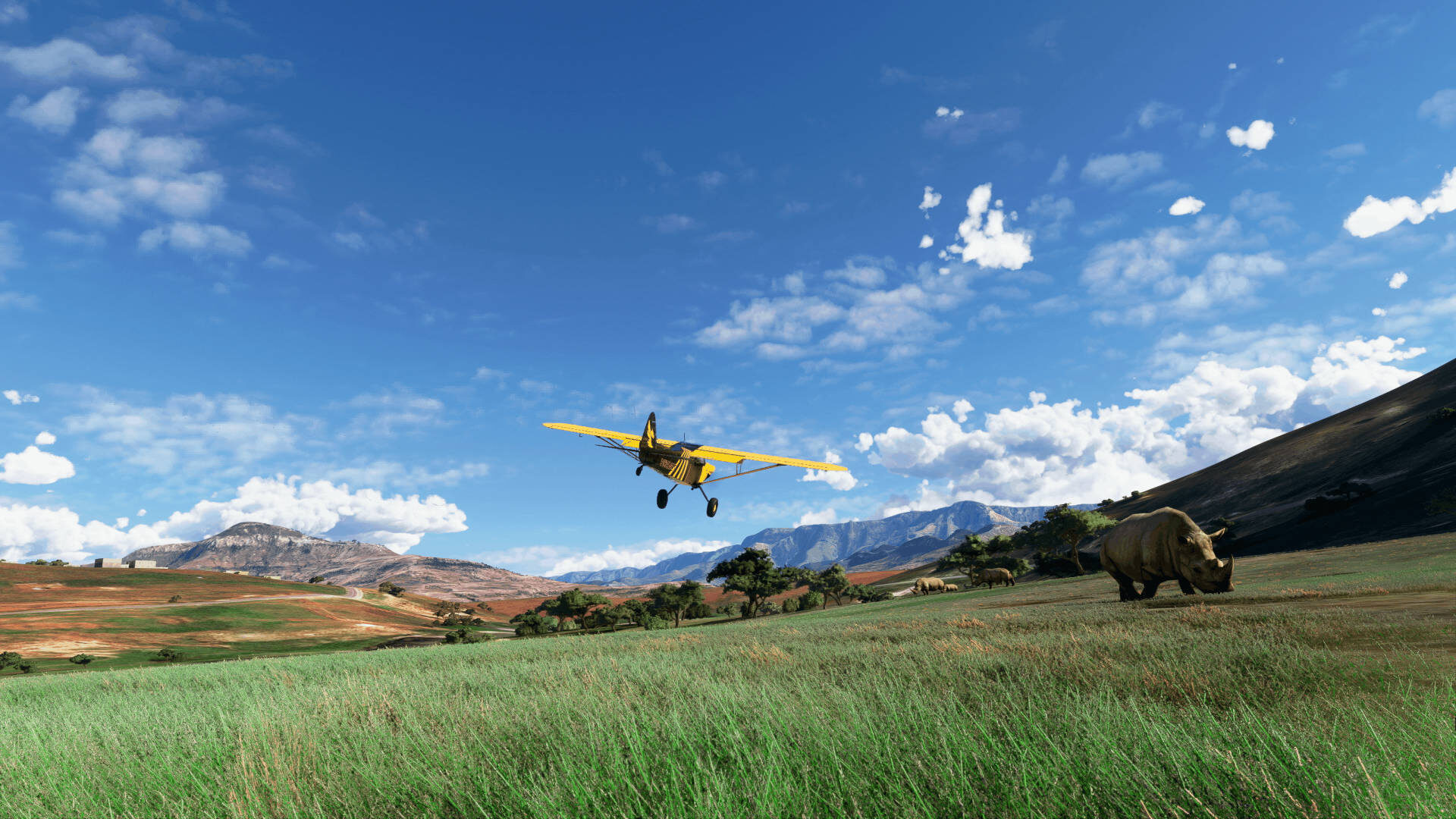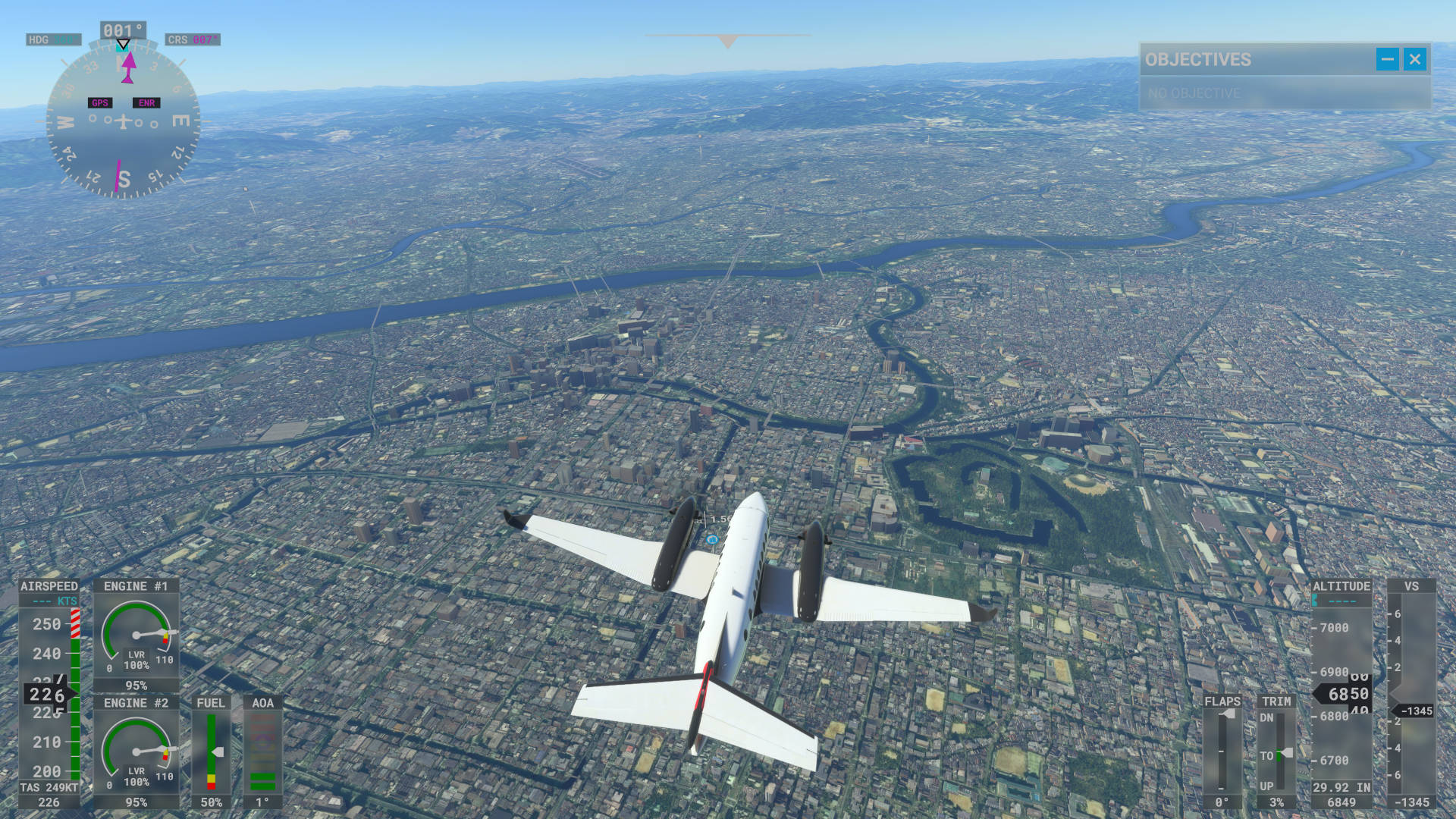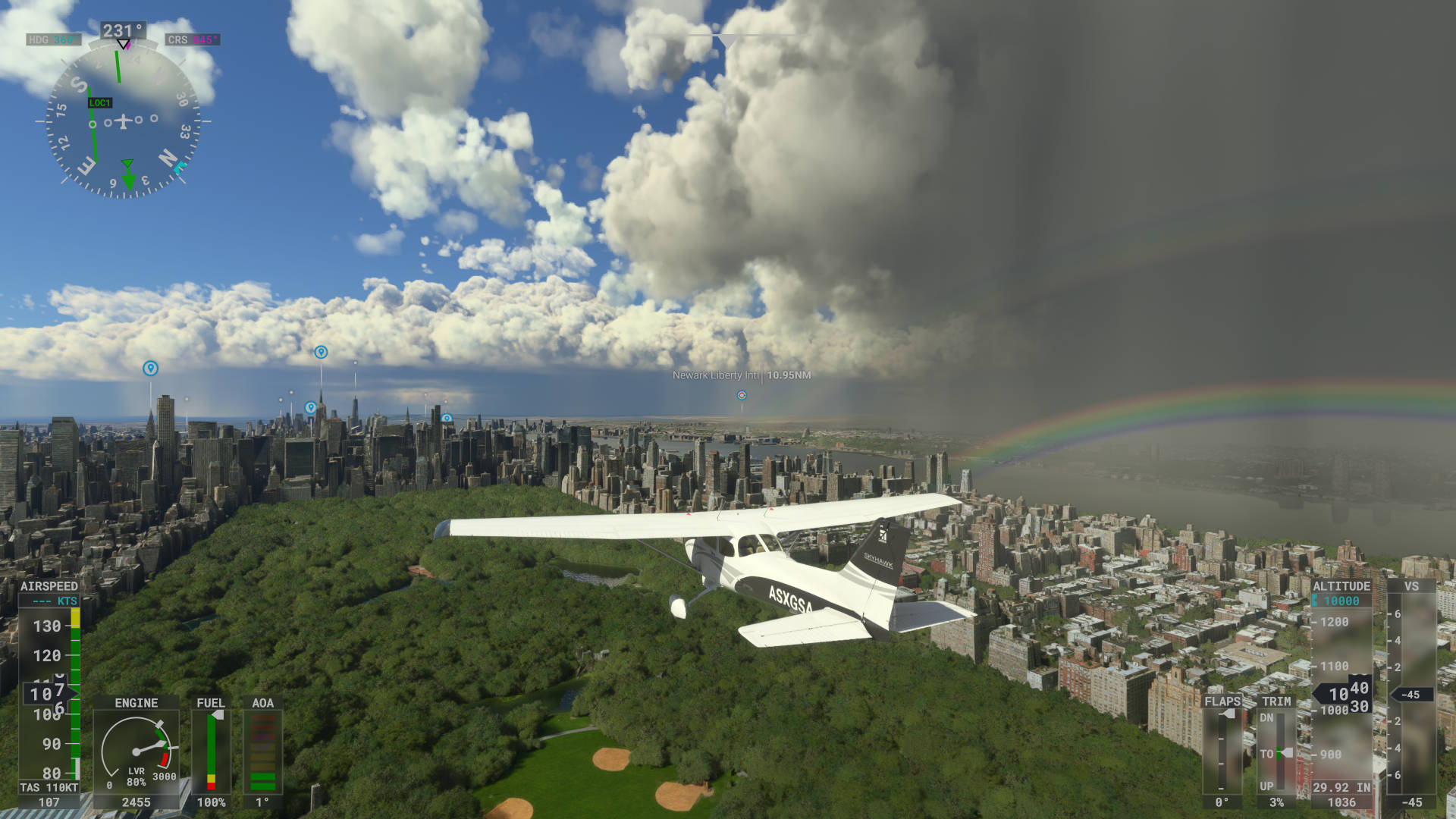Microsoft Flight Simulator Console Impressions
Ever since I was a little kid, I’ve been enamored with air travel. To me, airplanes and airports weren’t simply vehicles and structures to facilitate the moving of people from one place to another, they were the keys to endless possibilities. Even in recent years, as I’ve travelled more for work or to see family halfway across the globe, no amount of stress, hassle, or financial burden has been able to temper my passion.
However, in all of that, the actual “traveling in the air” part of air travel has been a challenge for me in part because I’m afraid of heights—and especially terrified at the idea of being high up in the air with no solid ground to escape to should a problem arise. I’ve found ways over the years to try to get over that fear, including one unexpected method: piloting a plane. Back in high school, we took a group of elementary school students to the local airport as part of a summer engineering program I was helping to teach. While most of the participants simply got quick rides around the nearby airspace in a Cessna, the pilot let me take off, fly, and then land the plane all on my own on our second trip up into the air.
Although having less than a car door’s worth of metal and plastic between me and falling to my doom did not help my fear of flying, getting the chance to be in control of my own destiny kinda did. One of the terrifying things about flying in a plane is knowing you have absolutely no control over what happens during the entire ride, so even though I was technically in more danger when I was piloting that plane myself versus having a professional do so, the fear disappeared in a way I hadn’t expected.
I know it might seem like I’m just rambling on about random moments in my life, but all of this begins to paint a picture for why I’ve been so excited to try Microsoft Flight Simulator. Even if it can’t replicate the romance of real-life air travel, the game still taps into that desire to feel like anywhere and everywhere in the world is waiting for us, with our destinies in our own hands. And sure, flight sims are by no means a new thing, but Microsoft’s resurrection of its classic brand is important because it’s the first time we console players have gotten a taste at this level of what’s typically been a PC-only experience.
Microsoft gave me the chance to get into Microsoft Flight Simulator early for review purposes, but how in the world do I review a game this complex and expansive after only five or so days of playtime? I wouldn’t know where to start with passing judgment on it yet, but then again, I had similar trouble knowing where to even start with the game itself.
The obvious place is with the selection of tutorials, but let’s be real: When you pick up something like Microsoft Flight Simulator for the first time, what you really want to do is hop into a plane and go have fun. Still, I definitely recommend you bite the bullet and do some studying first, even if it’s nothing more than the initial set of tutorials for basic controls. The good part is, you can be up in the air pretty quickly, as the team at Asobo Studio has done a respectable job of adapting the game to the standard Xbox controller. It’s definitely not perfect, and can certainly get complicated at times, but Microsoft Flight Simulator is far easier to play on consoles than I had expected. I promise you, you don’t need to have experience with flight sims, or even standard PC control schemes, to be able to get into the game—so don’t let that be something that scares you off.
In fact, the barrier of entry is even lower thanks to another factor: Xbox Game Pass. I’m not sure if there’s ever been a more perfect game for the service than Microsoft Flight Simulator. Bringing the series back was already a risk given its niche appeal outside of a core group of hardcore flight sim fans, but taking such risks is part of what I think a service like Game Pass can encourage. For subscribers, there’s no reason not to try the game, outside of the hassle of clearing off space on your internal drive, and the potential concern for bandwidth caps. When you have to stress over every dollar spent on buying games, something like Microsoft Flight Simulator is going to be one of the farthest choices from a safe bet that most people could find. Through Game Pass, though, there’s no risk—and if the game is indeed too complicated or boring for you, then all you’ve lost is a bit of your time.

And, being totally honest, I might actually use “boring” to describe Microsoft Flight Simulator—but not necessarily in a bad way. Playing over these past few days has really made it clear how long it’s been since I’ve experienced a game where I feel no pressure to do anything. My go-to for relaxing at night is Apex Legends, but “relaxing” in that case means trying to get wins, helping my teammates, completing challenges, finishing up prize trackers, maxing out battle passes, or many other activities that are far from calming. Even when I hop into less demanding games such as Minecraft, I’m still keeping track of goals for my building projects, the materials I need, new locations I want to scout, and so on.
Microsoft Flight Simulator, in at least the ways I’ve played it so far, demands nothing from me. It wants nothing, other than to bring to life a recreation of the Earth to explore in whatever ways we see fit. With some of the more casual-play settings checked, once my plane is up in the air, the freedom the game affords is almost a little unnerving at first. Our brains get so trained by other video games to focus on checklists and progression milestones that, when all of those things are gone, we can feel lost. There’s one thing we will all inevitably do at first—try to find where we live, and then maybe crash into that spot—but past that, I’ve just been going wherever felt right at the moment. Maybe it’s heading to Japan without having to pay those high international flight fees. Maybe it’s flying over New York City during a rainstorm to see how much I can push the game’s engine. Maybe it’s picking a city I’ve never been to (or possibly even heard of) just to find out what I find. Microsoft Flight Simulator is a mix of that spirit of exploring every nook and cranny of video games that some of us have, with that passion for seeing the wonder and beauty of our planet that many of us have.
In all of those moments, and all of those flights, I’ve come away incredibly impressed with how the game is running on my Xbox Series X. I’m sure it’s not as good as the PC version, but I also don’t really know what I’m missing. (Although, having friends who play the PC build, I do know it isn’t perfect there either.) Sometimes—like my aforementioned flight around the Big Apple—you can feel the game engine strain, as the architectural complexity of the city and the weather effects meet. For the most part, however, I’ve got few complaints about how the game runs. I worried that it would be clear that we console players were getting the lesser experience, but I honestly don’t feel like that’s the case. (Of course, I can’t speak to how Microsoft Flight Simulator runs on an Xbox Series S, but I’ve heard good things.)
In fact, my biggest complaints are about the technology used to build out the game’s recreation of the Earth. I feel bad even saying that, because boy is it impressive what the team has accomplished here. There’s no question that this is a flight sim beyond anything our industry has seen before, and the technology used to build three-dimensional cities and landscapes from two-dimensional satellite imagery does an amazing job that could never have happened even just a handful of years ago. And yet, when that technology does fail, it can really stand out. One of my favorite airports is Kansai International Airport, aka KIX, aka RJBB. KIX sits upon an artificial island out in Osaka Bay, connected to land by the 12,300-foot-long Sky Gate Bridge R. The problem? The bridge, for whatever reason, doesn’t render visually in the game, even though traffic pathing knows it’s there. So, when taking off from KIX and circling around to the North, you can see cars traveling between land and the airport across open water.
There’s also the varying level of importance placed on different airports. KIX, for example, is a simpler construction using AI and/or automated techniques which pull data from Bing Maps. When you then compare that to a “hand crafted” airport like Los Angeles’ LAX, the difference between the two is instantly noticeable.
Now, I get it. There are 37,000 airports accessible in Microsoft Flight Simulator—it is impossible for every airport to get the care and attention places like LAX have. Still, it’s inevitable that some of your favorite airports (for those of us who have favorite airports) are going to be on the lower end of the detail scale, and that can be a bummer. At the very least, as the game gets more of those hand-crafted locales, KIX at least has a decent chance of joining that list someday—unlike my hometown airport OMA.
I don’t think I’m being unfair at all to Microsoft Flight Simulator to say that suggesting a purchase for those outside of the flight sim fanatic crowd is complicated. If you’re an Xbox Game Pass subscriber, however, this is one of the easiest recommendations I can make, even if I’m still a ways out from being able to formulate any sort of final opinion. This is an exciting and enthralling video game experience the likes of which rarely come around, and if you’re already paying Microsoft a subscription fee, there should be nothing stopping you from giving it a try.
Who cares if you usually don’t typically like or ever even play flight sims. Put aside any fears of control complexity or knowledge requirements. Download the game, hop into a plane, and see the world from a new perspective.
Summary:
Score: -
was reviewed using review code, physical copies, or hardware provided by . Scores are graded on a scale of E (Bad) to S (Special) in homage to Japanese video game grading scales, with the understanding that an S still does not denote a "perfect" score. Scores may have been adjusted from the original source to better fit my personal scale.


